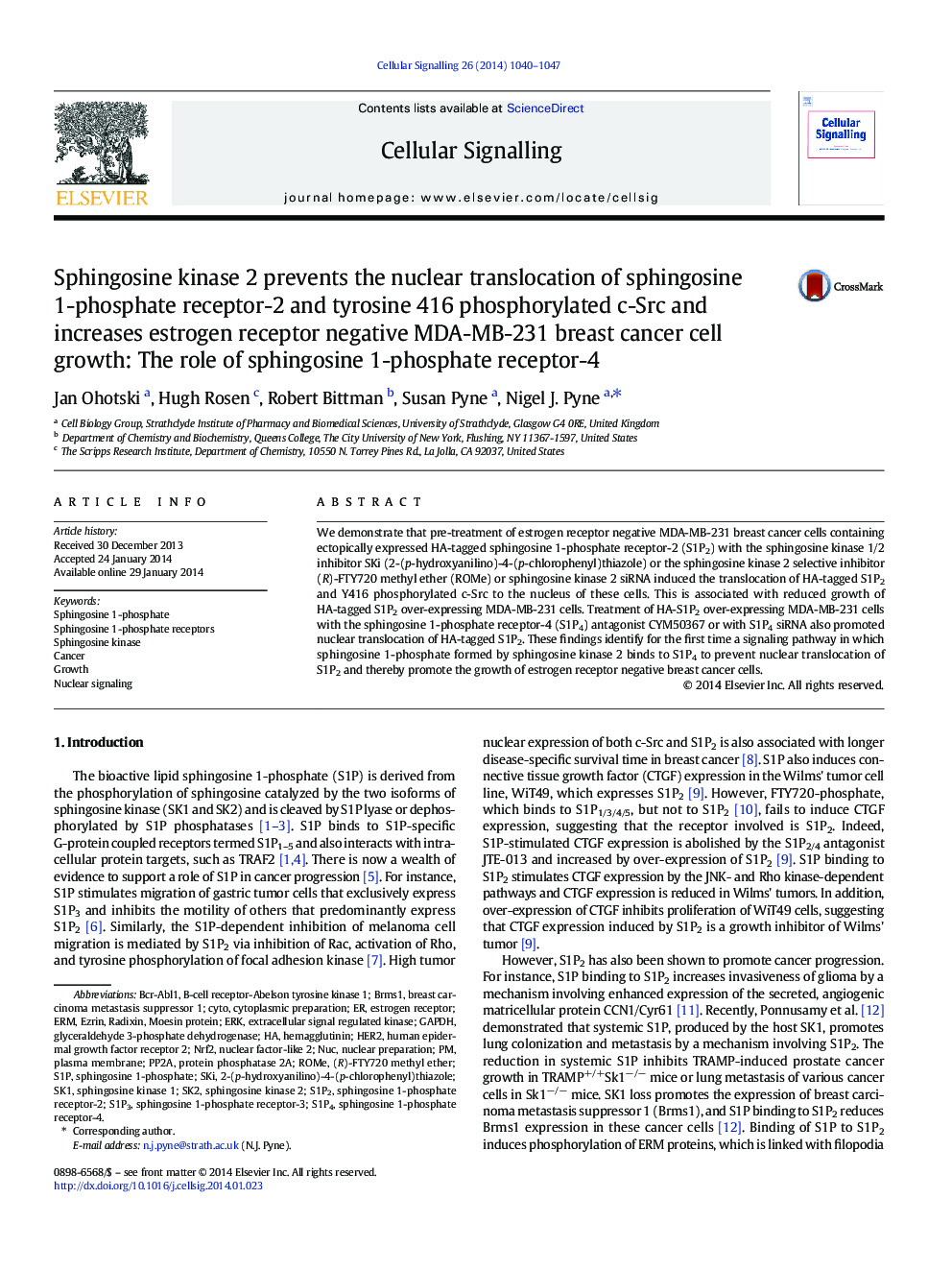| Article ID | Journal | Published Year | Pages | File Type |
|---|---|---|---|---|
| 10815492 | Cellular Signalling | 2014 | 8 Pages |
Abstract
We demonstrate that pre-treatment of estrogen receptor negative MDA-MB-231 breast cancer cells containing ectopically expressed HA-tagged sphingosine 1-phosphate receptor-2 (S1P2) with the sphingosine kinase 1/2 inhibitor SKi (2-(p-hydroxyanilino)-4-(p-chlorophenyl)thiazole) or the sphingosine kinase 2 selective inhibitor (R)-FTY720 methyl ether (ROMe) or sphingosine kinase 2 siRNA induced the translocation of HA-tagged S1P2 and Y416 phosphorylated c-Src to the nucleus of these cells. This is associated with reduced growth of HA-tagged S1P2 over-expressing MDA-MB-231 cells. Treatment of HA-S1P2 over-expressing MDA-MB-231 cells with the sphingosine 1-phosphate receptor-4 (S1P4) antagonist CYM50367 or with S1P4 siRNA also promoted nuclear translocation of HA-tagged S1P2. These findings identify for the first time a signaling pathway in which sphingosine 1-phosphate formed by sphingosine kinase 2 binds to S1P4 to prevent nuclear translocation of S1P2 and thereby promote the growth of estrogen receptor negative breast cancer cells.
Keywords
CytoS1P3HER2Nrf2GAPDHS1P2BCR-ABL1ERKPP2ASK1SK2ERMBrms1S1PSphingosine kinaseSphingosine kinase 1Sphingosine kinase 2sphingosine 1-phosphateSKIGrowthRomeCancerextracellular signal regulated kinasenuclear signalingPlasma membranenuclear factor-like 2hemagglutininprotein phosphatase 2Anucglyceraldehyde 3-phosphate dehydrogenaseEstrogen receptorHuman epidermal growth factor receptor 2Sphingosine 1-phosphate receptors
Related Topics
Life Sciences
Biochemistry, Genetics and Molecular Biology
Biochemistry
Authors
Jan Ohotski, Hugh Rosen, Robert Bittman, Susan Pyne, Nigel J. Pyne,
